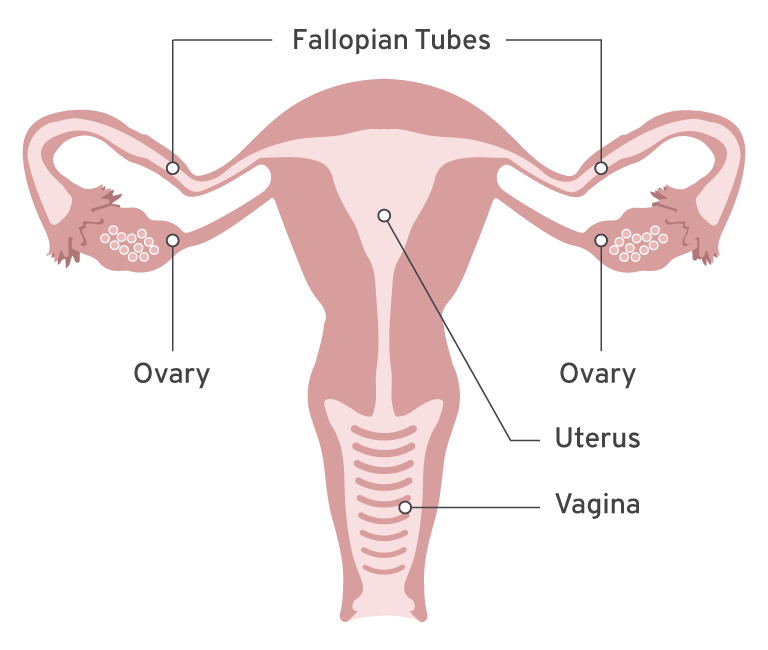How Contraceptives Work
Authors
Media Contact
For general and media inquiries and to book our experts, please contact: pr@rstreet.org
The Biology of Pregnancy
Understanding how pregnancy occurs is vital to understanding how contraceptives work.
Approximately halfway through the roughly 28-day menstrual cycle, one ovary releases an ovum (egg); this is called ovulation. After ovulation occurs, the egg travels down the fallopian tube toward the uterus. While in the fallopian tube, it may encounter sperm and become fertilized, which is when conception occurs, but this must happen within the 12 to 24 hour lifespan of the egg. If the egg is not fertilized by a sperm, menstruation occurs, where the lining of the uterus sheds and exits the body through the vagina. If the egg is fertilized it becomes a zygote and will continue traveling toward the uterus. During this time, the zygote’s cells divide multiple times, and it becomes an embryo, which may or may not implant into the lining of the uterus. Only 10-40 percent of embryos successfully implant in the uterus. Pregnancy only begins once implantation occurs, about six days after fertilization. The embryo becomes a fetus eight weeks after fertilization. All contraceptives prevent pregnancy before implantation occurs, but the way they prevent pregnancy differs by contraceptive type.

Types of Contraceptives
There are many different types of contraceptives. Most contraceptive methods use hormones to prevent pregnancy. The most ubiquitous hormonal contraceptive method is the oral contraceptive (OC) pill, what many people think of when they hear “birth control.” Other hormonal contraceptive methods include self-administered patches and rings, as well as implants and intrauterine devices (IUDs), also called long-acting reversible contraceptives, which require a brief medical procedure to use. There is also an injectable form of hormonal birth control. Non-hormonal contraceptive options include male and female condoms, spermicide, cervical caps, diaphragms, sponges, and a non-hormonal IUD. Some contraceptive methods are more effective than others, and the option a person chooses depends on many factors.
Another subcategory of contraceptives is emergency contraceptives (ECs), which are used after having intercourse to prevent unintended pregnancy. There are several brands of EC pills available in the United States, and all but one are available over the counter. The non-hormonal IUD can also be used as EC if inserted within five days of having intercourse.
How Oral Contraceptive Pills Work
Although the names of the active ingredients vary, OC pills fall into two categories: progestin-only and combination, which contain both estrogen and progestin. The hormonal formulations of an OC determine how it affects the body and prevents pregnancy. Progestin is primarily responsible for preventing pregnancy. It suppresses ovulation by preventing the release of hormones that promote egg development and release. Progestin also decreases sperms’ ability to reach the egg by thickening the cervical mucus. Progestin also affects the fallopian tubes, slowing the movement of the egg toward the uterus, making it less likely to be fertilized. Finally, progestin makes the lining of the uterus less suitable for embryo implantation. OC pills that contain estrogen also prevent ovulation, but through a different hormonal process. Because estrogen and progestin suppress ovulation, OCs prevent an egg from being available to initiate pregnancy. OCs also prevent pregnancy by making it more difficult for sperm to reach an egg, if ovulation does occur. Should these mechanisms not prevent fertilization, progestin’s effects on the uterine lining may also prevent pregnancy by discouraging implantation.
How Emergency Contraceptive Pills Work
There are two types of Food and Drug Administration (FDA)-approved EC pills. The version that is available over the counter uses progestin to prevent pregnancy. This form of EC works by preventing or delaying the egg’s release from the ovaries. This leaves no egg available, making fertilization impossible. The effectiveness window for progestin-containing EC pills is rather narrow. They must be taken within 72 hours of intercourse. The other version of the EC pill uses a different hormone (a selective progesterone receptor modulator) that also prevents ovulation, albeit by a different process than progestin. This EC pill has a longer effectiveness window and can be taken up to five days after intercourse. Both EC pill types work by preventing or delaying the release of an egg such that fertilization cannot occur.
How Hormonal IUDs Work
The four FDA-approved hormonal IUDs work to prevent pregnancy primarily by preventing fertilization. They do this in several ways. First, the progestin contained in hormonal IUDs thickens the cervical mucus and may affect the movement of the egg through the fallopian tubes. Second, the presence of the IUD in the uterus causes localized inflammation that changes the lining of the uterus, degrades the egg, and slows the movement of sperm. Although the majority of hormonal IUD users still release an egg during their menstrual cycle, the IUD’s effects prevent fertilization in nearly all cases.
How Non-Hormonal IUDs Work
The only FDA-approved non-hormonal IUD is a copper-containing device. This IUD releases small amounts of copper into the reproductive tract. The presence of the copper primarily prevents fertilization by damaging sperm, thus impairing its movement through the reproductive tract. The non-hormonal IUD also causes localized inflammation in the reproductive tract that further degrades sperm and eggs. This also reduces the chance of fertilization, despite ovulation being unaffected by the device. When used as EC, the non-hormonal IUD works similarly to prevent fertilization.
Conclusion
Regardless of whether contraception is used, many processes have to proceed correctly for pregnancy to occur: Hormonal conditions must be right throughout the reproductive tract, the egg and sperm must be viable and meet at the proper time, and the embryo must implant. Contraceptives cause changes to the female reproductive system that disrupt these processes. They primarily do this by preventing fertilization. In the unlikely event that fertilization occurs, contraceptives’ effects on other processes discourage implantation. Contraceptives do not have any effect once implantation occurs, meaning they do not induce abortions.
